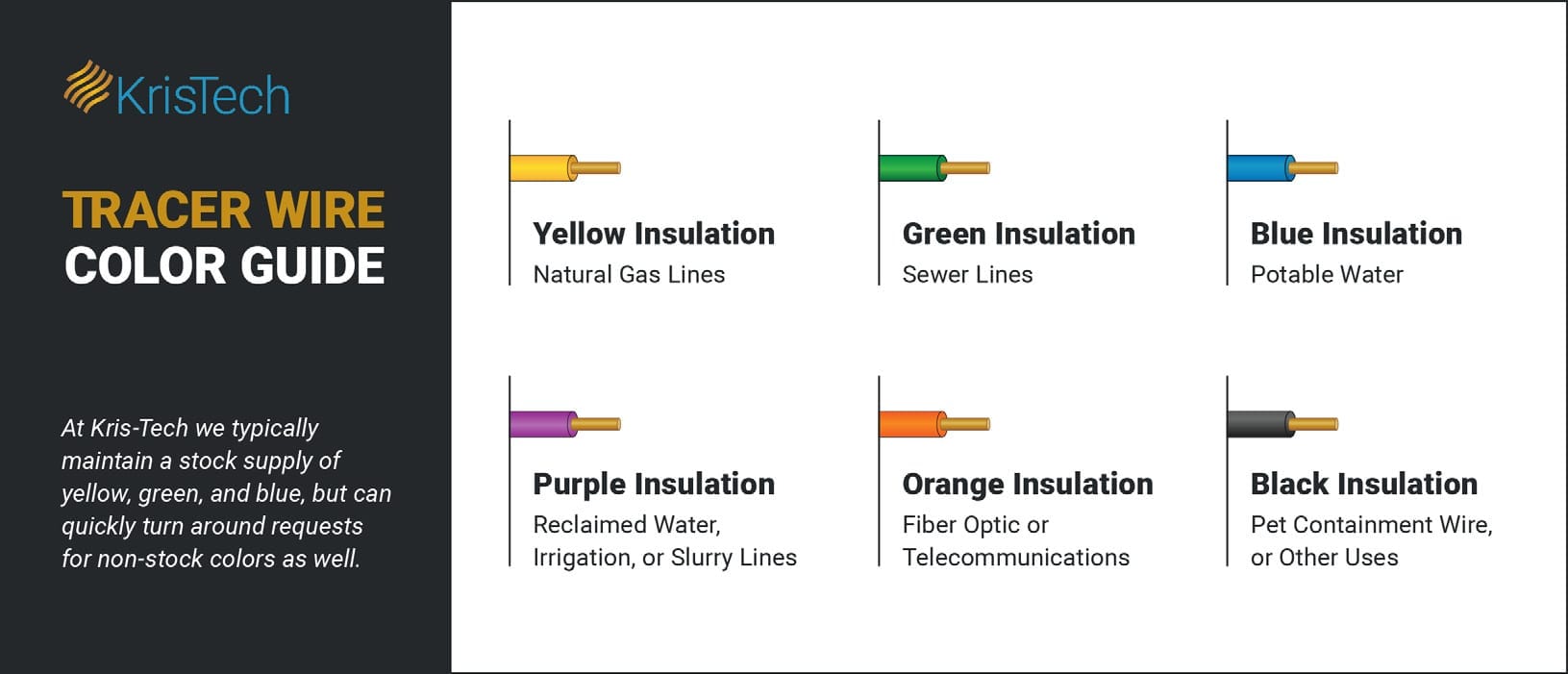If you’ve ever seen a construction crew try to fix a broken water main, you know how quickly a flooding problem can develop.
Accidentally digging into an underground utility can cause thousands of dollars in damage, delay projects, and possibly hurt or kill someone. Thankfully, there is a simple, low-cost answer designed to prevent expensive problems like these from happening in the first place.
Using tracer wire is one of the best ways to prevent damage to underground utilities, though the type of wire you’ll need may differ depending on the application. Also known as locating wire, tracer wire conductors come in several forms, each with its own application:
Solid copper, copper-clad steel, and stainless steel tracer wire are insulated with high-molecular-weight polyethylene (HMWPE), though high-density polyethylene (HDPE) is also available. Underground feeder (UF) and RHW wire may also be used as tracer wire as they are rated for direct burial use.
The American Public Works Association’s (APWA) color guide has published guidelines determining what color tracer wire is used for what type of underground utility. By keeping the colors consistent across the board, workers can quickly identify what type of utilities are running beneath their feet and accurately locate them.

According to the APWA’s uniform color code, blue tracer wire is used to locate potable water lines. This includes all municipal and city pipes carrying the water we use to drink, shower, and wash our dishes.
Blue tracer wire should not be confused with green, which is used to find sewer lines, or purple, which traces reclaimed water and irrigation lines. In those cases, the water is non-potable and cannot be safely consumed. Other colors used to trace underground utilities include red (electrical), orange (telecom), and yellow (gas).
Blue tracer wire will run alongside city or municipal supply lines carrying potable water away from the treatment plant to homes and businesses. Occasionally, wire may also be found along the inside of pipes.
When using pipe bursting tracer wire, stranded copper-clad steel wire is used with another tool to break old water lines and install new ones without digging a trench.
Tracer wire is one of those things you don’t think you need until you see a broken water main shooting thousands of gallons of water 80 feet in the air like Old Faithful.
It may not be the sexiest material, but tracer wire makes it easier to find pipes and underground assets long after it has been installed. If installed correctly, tracer wire can last for decades, allowing future generations to find and replace underground utilities as they need to.
Most importantly, tracer wire is a cost-effective insurance policy against accidental damage. Broken water pipes can quickly cost municipalities thousands of dollars in lost time, revenue, and labor. Beyond the inconvenience caused by repairing damaged pipes, lost water can potentially lead to health issues for the environment, people, and animals. This is especially true in hot climates like the Southwestern U.S., where water sources are limited.
Try installing the tracer wire on either the east or west side of the pipe or line. Laying wire along the side of the asset will ensure more accurate location and keep it from getting damaged by shovels, backhoes, or other excavating equipment.
Whether you choose the east or west side of the pipe, it’s worth it to be consistent. Consistency ensures that whoever looks for the utility in the future will know where the tracer wire is and where not to dig. If standard procedures aren’t followed, it’s harder for other workers to pinpoint pipe locations, opening the door for accidents.
Once you know what side you’ll be placing the tracer wire on, tape it or secure it to the pipe every 8-10 feet. This will reduce shifting and drift, giving you more accurate results when looking for underground assets.
Want to learn more about how to install tracer wire? Our installation guide has everything you need to complete the job safely!
No one wants to show up to the worksite without all the tools they need to get the job done. Our Total Tracer Wire Solution has everything you need to safely install locating wire, including ground rods, spacers, test stations, and marking tape.